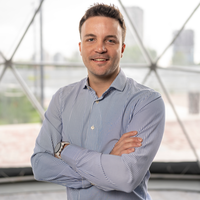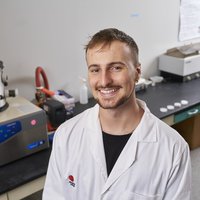Diabetes is
not only a disease that affects people’s lifestyles, it is also one of the
leading causes of lower-limb amputation, along with other conditions such as
blindness, according to the Pan American Health Organization. The World Health
Organization estimates that individuals with diabetes are 10 to 20 times more
likely to lose a limb than those without the condition. This is the ultimate
consequence of chronic ulcers, but treating these ulcers is costly and
inaccessible for millions of people living with diabetes.
The problem
is particularly severe in Mexico, which ranks as the second country in the
world with the highest rate of diabetes-related amputations, surpassed only by
the United States, according to the Organisation for Economic Co-operation and
Development (OECD).
Technology
and medical innovation may offer a way forward. Enrique González (Mexico, 32
years old) has developed a wound dressing that promotes cellular regeneration
of damaged tissue. The base material is derived from agave bagasse, an
agro-industrial byproduct of tequila production. González developed a method to
use it as a molecular scaffold to which cells can adhere, facilitating skin
growth. On top of this scaffold, nanocapsules are incorporated to stimulate
cell growth and collagen production.
“By
adopting a circular economy approach, we drastically reduce production costs.
And by integrating technology, we enable a treatment that accelerates healing
without the need for constant medical intervention. This helps overcome the
barrier to access advanced treatments, providing a more affordable and
effective solution for both patients and healthcare systems,” González
explains.
The
innovation began with limited resources: and a bread oven. A graduate in
Nanotechnology and Molecular Engineering from Universidad de las Américas
Puebla (Mexico), González quite literally put his own skin on the line to
develop the idea.
“In those
early days, without resources or lab connections for testing, we decided to try
the first prototypes on my own leg, using small, controlled wounds. We measured
the impact of each prototype on healing compared to control groups,” he
recalls.
“When we
began seeing clear and promising results, we realized the true potential of
this technology to make a real difference for patients with chronic ulcers.
That’s when we decided to explore investment opportunities and formalize a
company,” he adds.
That
company is Nanoblast. Initial clinical trials of the dressing have demonstrated
a 98% success rate, healing chronic ulcers that other treatments failed to
close. González’s solution also addresses the economic challenge of such
treatments. “Competing
dressings typically range from $60 to $4,000, while our product will be offered
at around $25, significantly reducing the economic barrier and increasing
accessibility for more patients,” he estimates.
The
dressing developed by Nanoblast already has two patents, though it is not yet
available in the Mexican market, something González hopes will change soon with
plans to expand internationally afterward. There are more developments in the
pipeline. “We’re
working on new applications of our technology to regenerate other tissues, such
as the nervous system, where we already have promising preliminary results,” he
says. This young
Mexican’s mission is to make regenerative medicine more accessible and
sustainable.
In addition
to being named one of MIT Technology Review in Spanish 35 Innovators Under
35, González was recognized in 2019 with the Coparmex Jalisco Entrepreneur
Award. In 2015, his project was one of those selected in the Zapopan Challenge.




